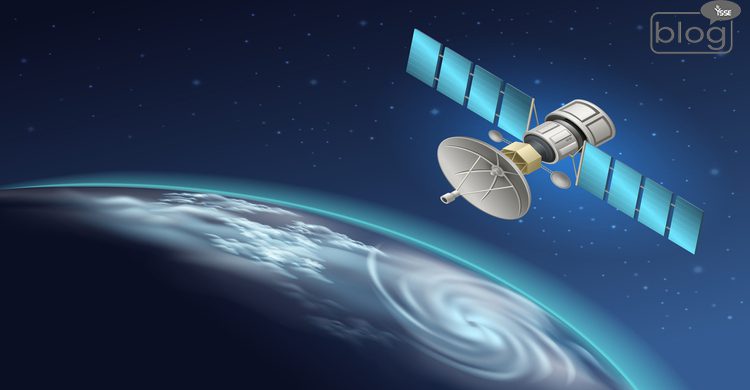- Bangabandhu Satellite-1, Bangladesh’s inaugural venture into space, represents a momentous stride in the nation’s technological prowess and ambitions. This blog explores the significance and journey of this satellite, delving into its capabilities and the transformative impact it holds for Bangladesh across various sectors, from telecommunications to disaster management. Join us as we unravel the story behind Bangabandhu Satellite-1 and its pivotal role in shaping Bangladesh’s future in the global arena.
Bangabandhu Satellite-1, Bangladesh’s inaugural satellite, was launched on May 12, 2018. Named in honor of Bangabandhu Sheikh Mujibur Rahman, the founding father of Bangladesh, it holds significant symbolic value for the nation. This satellite marks Bangladesh’s entry into the space age, signifying its technological advancements and aspirations.
Controlled from Bangladesh’s geocenter, Bangabandhu Satellite-1 serves a variety of purposes, ranging from telecommunications to broadcasting and emergency services. Its operational capabilities contribute to enhancing communication networks and disaster management within the country and beyond.
What is a satellite or artificial satellite?
A satellite is a man-made object that orbits the Earth. That is, the wireless receiver or transmitter that orbits the earth is called satellite or artificial satellite. Satellites are mainly used in weather forecasting, radio communication, television broadcasting, research, military etc. Satellites have made many tasks of human life easier.
What is Bangabandhu Satellite-1?
‘Bangabandhu Satellite-1’ is an artificial satellite in Geostationary Earth Orbit 35,800 km above the Earth’s surface. So it is called Geostationary Satellite or geostationary satellite. A geostationary satellite is an artificial satellite that orbits the earth once in 24 hours from that orbit along the equator. This circuit will be from west to east. As a result, the satellite will remain almost stationary with respect to the ground station.
The launch mass of Bangabandhu Satellite-1 is 3,600 kg. The duration of the Bangabandhu Satellite-1 mission of this launch mass will be 15 years. The satellite’s transponder will receive data sent from the ground station (up-link) in the form of electromagnetic waves or microwave signals. It will ‘amplify’ the signal several times and send it back to earth (down-link).
Bangabandhu Satellite-1 Expenditure and Loan Agreement
The total cost of the Bangabandhu Satellite-1 project was estimated at Tk 2,967 crore 95 lakh. Out of this, Bangladesh government gave Tk 1,315 crore 51 lakh. And the remaining Tk 1,652 crore 44 lakh was taken as a loan from Hong Kong and Shanghai Banking Corporation (HSBC). This loan has to be repaid in a total of 20 installments over the next 12 years. In the end, a total of Rs 2,765 crore was spent to fly the satellite.
The journey of Bangabandhu Satellite-1
May 11, 2018 or 28 Baishakh (Friday) in 1425 Bangla is a historic day in the history of Bangladesh. Because on this day, Bangladesh’s first artificial satellite ‘Bangabandhu Satellite-1’ flew into space from Launch Complex 39A (39A) of Cape Kennedy Space Center located in Florida, USA at 2:14 PM Bangladesh time. This satellite was the first successful launch of the new version of the Falcon-9 rocket. After the launch, the stage-1 of the rocket opens after reaching a certain height.
As soon as stage-1 of the rocket opens, the engine of stage-2 starts. Then Stage-1 returns to the drone ship floating in the Atlantic. And stage-II moves the satellite into geostationary transfer orbit. There the satellite is released from the payload. The entire process takes 30 minutes to complete. After launch from the rocket, control of Bangabandhu Satellite-1 was taken from three ground stations in the USA, South Korea and Italy. Gazipur ground station received its initial signal 1 hour and 10 minutes after launch.
Bangabandhu Satellite-1 has to travel 35,800 km to settle in its own orbital slot at the fixed 119.1 degree east longitude of space. And through this launch, Bangladesh became the 57th country in the world to own its own satellite.
Slogan: ‘Jai Bangla, Jai Bangabandhu’ the satellite of Bangladesh was launched. The satellite of Bangladesh has ‘BB’ written in English and the logo of the Government of Bangladesh.
Advantages of Bangabandhu Satellite-1
A satellite is an object that orbits around a larger object. Bangabandhu Satellite-1 is capable of revolutionizing the development of information technology in Bangladesh if its proper utilization is ensured. Bangabandhu Satellite-1 has various advantages. Among these benefits, it will provide benefits in commercial aspects, will play a very effective role in combating and managing natural disasters, help in waterway navigation and exploration of mineral resources, military and defense benefits, country image and space research can be used for this satellite.
Earning foreign exchange
Apart from ensuring an uninterrupted communication system of telecommunication, television and internet of the country, there is a lot of potential to earn foreign currency by renting satellite waves. Bangabandhu Satellite-1 will have a total of 40 transponders. Out of these 40 transponders, 20 will be kept for the use of Bangladesh. The remaining 20 transponders will be kept for sale to a foreign company. By selling this satellite service to Bhutan, Sri Lanka, Myanmar, Nepal, we can earn more than 50 million US dollars in foreign exchange annually.
Development of e-services through satellite
Telemedicine, e-research, e-learning, video conferencing, defense and disaster management will give a massive boost to e-services in all sectors through this satellite. Even if the terrestrial infrastructure is damaged by natural calamities, Bangabandhu Satellite-1 will maintain an uninterrupted communication system across the country, which was not possible till now.
Uninterrupted telecommunication services will also be possible with satellite technology, especially in rivers and rivers, remote islands and hilly areas. In other words, the telephone, television, internet connection would have been cut off, the communication system would have been completely broken, that will not happen anymore due to tidal waves, big cyclones, floods.
Bangabandhu Satellite-1 stands as a testament to Bangladesh’s technological advancement and aspirations. With its multifaceted capabilities, from telecommunications to disaster management, it promises to revolutionize various sectors and bolster the nation’s standing in the global arena. Its launch signifies a significant leap forward for Bangladesh, opening new horizons in information technology and ensuring a more connected, resilient future.
Category: World of Fiction
To read more blogs, click here.
Writer:
Rupsana Hasan
Intern, Content Writing Department
YSSE

